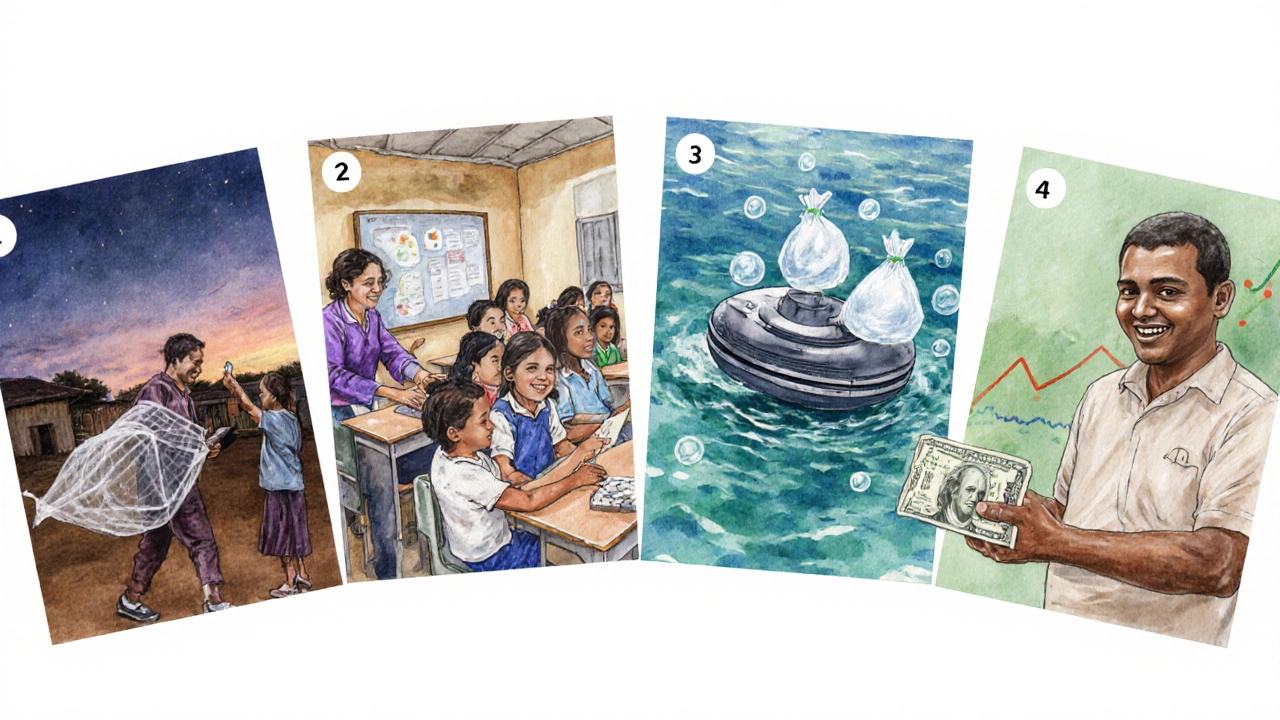Best Charity Selector 2025
Recommended Charity Match
Why This Charity?
How We Evaluate Charities
- Impact Measurement - Quantifying lives improved or ecosystems protected per dollar Key
- Administrative Cost Ratio - Share of funds going to overhead vs. programs Key
- Transparency & Accountability - Public access to financials, audits, and impact reports Key
When you ask yourself “which charity organization a nonprofit that uses donations to address social or environmental problems is the best charity to support”, you’re stepping into a landscape of ratings, impact data, and personal values.
Quick Takeaways
- Focus on impact per dollar, not just size.
- Use independent rating agencies - GiveWell, Charity Navigator, and Effective Altruism‑aligned lists.
- Match the cause (health, education, environment) with your passion.
- Check transparency: financial reports, program‑specific outcomes, and third‑party audits.
- Start small, track your donation’s effect, and adjust as you learn.
How to Evaluate a Charity - Core Criteria
Most donors overlook the three‑point framework that separates truly effective charities from the well‑meaning but less efficient ones:
- Impact Measurement: Does the organization quantify how many lives or ecosystems it improves per dollar?
- Administrative Cost Ratio: What share of funds goes to overhead versus programs?
- Transparency & Accountability: Are annual reports, audited statements, and independent evaluations publicly accessible?
These criteria are not magic numbers; they interact. A charity with a 15% overhead might still be the best charity for you if it delivers proven outcomes in a high‑need area.
Rating Agencies That Do the Heavy Lifting
Rather than reinvent the wheel, most donors rely on trusted third‑party assessors. Below are the three most respected agencies in 2025.
GiveWell a research nonprofit that recommends charities based on cost‑effectiveness in global health and poverty alleviation focuses on rigorous impact‑per‑dollar calculations, often publishing the exact number of lives saved for each $1,000 donated.
Charity Navigator an American nonprofit that grades charities on financial health, accountability, and transparency uses a star system (0‑4) and provides a detailed breakdown of program expenses versus administrative costs.
Effective Altruism a philosophical movement that encourages evidence‑based giving and often curates lists of top‑rated charities aggregates data from multiple sources and emphasizes cause‑area prioritization (e.g., global health, animal welfare, existential risk).
Side‑by‑Side Comparison of Rating Agencies
| Agency | Primary Focus | Methodology Highlights | Average Rating Scale | Founded |
|---|---|---|---|---|
| GiveWell | Global health & extreme poverty | Cost‑effectiveness analysis, randomized trials, longitudinal impact tracking | 0‑5 (Higher = More impact) | 2007 |
| Charity Navigator | Broad U.S. nonprofit sector | Financial health, program expense ratio, accountability metrics | 0‑4 Stars | 2005 |
| Effective Altruism | Cause‑area prioritization | Aggregated scores, research‑driven recommendations, community vetting | Tiered list (Top, High, Medium) | 2011 |

Top‑Rated Charities Across Major Cause Areas
Using the criteria above and the agencies’ recommendations, here are five charities that consistently rank high in 2025. Each entry includes the impact metric most often cited by rating bodies.
- Against Malaria Foundation (AMF) delivers insecticide‑treated nets to malaria‑endemic regions - Approx. 0.5 lives saved per $1000 (GiveWell).
- Schistosomiasis Control Initiative (SCI) provides mass drug administration for parasitic disease - Around 0.3 disability‑adjusted life years (DALYs) averted per $1000 (GiveWell).
- Education Endowment Foundation (EEF) funds evidence‑based teaching interventions in UK schools - 2‑3 additional months of learning per $1000 (Charity Navigator).
- The Ocean Cleanup develops technology to remove plastic from oceans - Estimated removal of 1ton of plastic per $500,000 spent (Effective Altruism).
- GiveDirectly provides unconditional cash transfers to ultra‑poor households - 4‑5% increase in household income per $1000 (GiveWell).
Aligning Your Donation With Personal Values
Even with solid data, the "best" charity is a personal decision. Ask yourself:
- Do I care more about direct health outcomes or long‑term systemic change?
- Is geographic focus important? (e.g., supporting my own community vs. global impact)
- Do I prefer a low‑overhead model or a charity that invests heavily in advocacy?
Answering these questions narrows the list from dozens to a handful that truly resonate.
Practical Steps to Make Your Gift Count
- Pick a cause area that matters to you.
- Check the charity’s latest rating on GiveWell, Charity Navigator, or an Effective Altruism list.
- Review the organization’s most recent annual report - look for program‑expense ratio and impact metrics.
- Consider using a donor advised fund a charitable giving vehicle that lets you decide later which charities receive the money if you want flexibility.
- Make a modest initial donation (e.g., $50‑$100) and monitor any publicly shared outcome updates.
- Adjust future contributions based on the charity’s performance and any new research.
Common Pitfalls and How to Avoid Them
Beware of “mission creep.” A charity that started with a specific program may expand into unrelated areas, diluting impact. Check that the organization’s current activities still match the cause you care about.
Don’t chase low overhead alone. Some charities achieve low admin costs by under‑staffing, which can hurt long‑term effectiveness. Balance cost efficiency with program depth.
Watch for “charity fatigue.” Re‑donating to the same nonprofit every year can be great, but staying alert to new, high‑impact entrants keeps your portfolio dynamic.
Putting It All Together - A Decision Tree
Use the following quick decision flow to land on the best charity for your next gift:
- Start with cause → Check rating agency → Review impact per dollar → Verify transparency → Match overhead tolerance → Donate.
This simple process cuts through the noise and gets you to a confident choice in under ten minutes.

Frequently Asked Questions
How often should I re‑evaluate the charities I support?
At least once a year - rating agencies update their scores, and charities release new annual reports that can shift the impact picture.
Is it better to give to a local charity or a global one?
Both have merits. Local charities often provide tangible community benefits, while global charities (especially those vetted by GiveWell) can achieve higher lives‑saved per dollar. Choose based on your personal priorities.
What does a “Program Expense Ratio” tell me?
It shows the percentage of total revenue spent directly on mission‑related activities. A higher ratio usually indicates more funds reaching beneficiaries, but it’s not the sole quality indicator.
Can I trust impact numbers published by charities?
Charities that undergo third‑party audits (e.g., GiveWell’s cost‑effectiveness studies) provide the most reliable figures. Look for transparent methodology sections in their reports.
How does a donor advised fund work?
You contribute assets to a sponsoring organization (often a community foundation). The fund grows tax‑free, and you decide later which charities receive grants, giving you flexibility and potential tax advantages.






